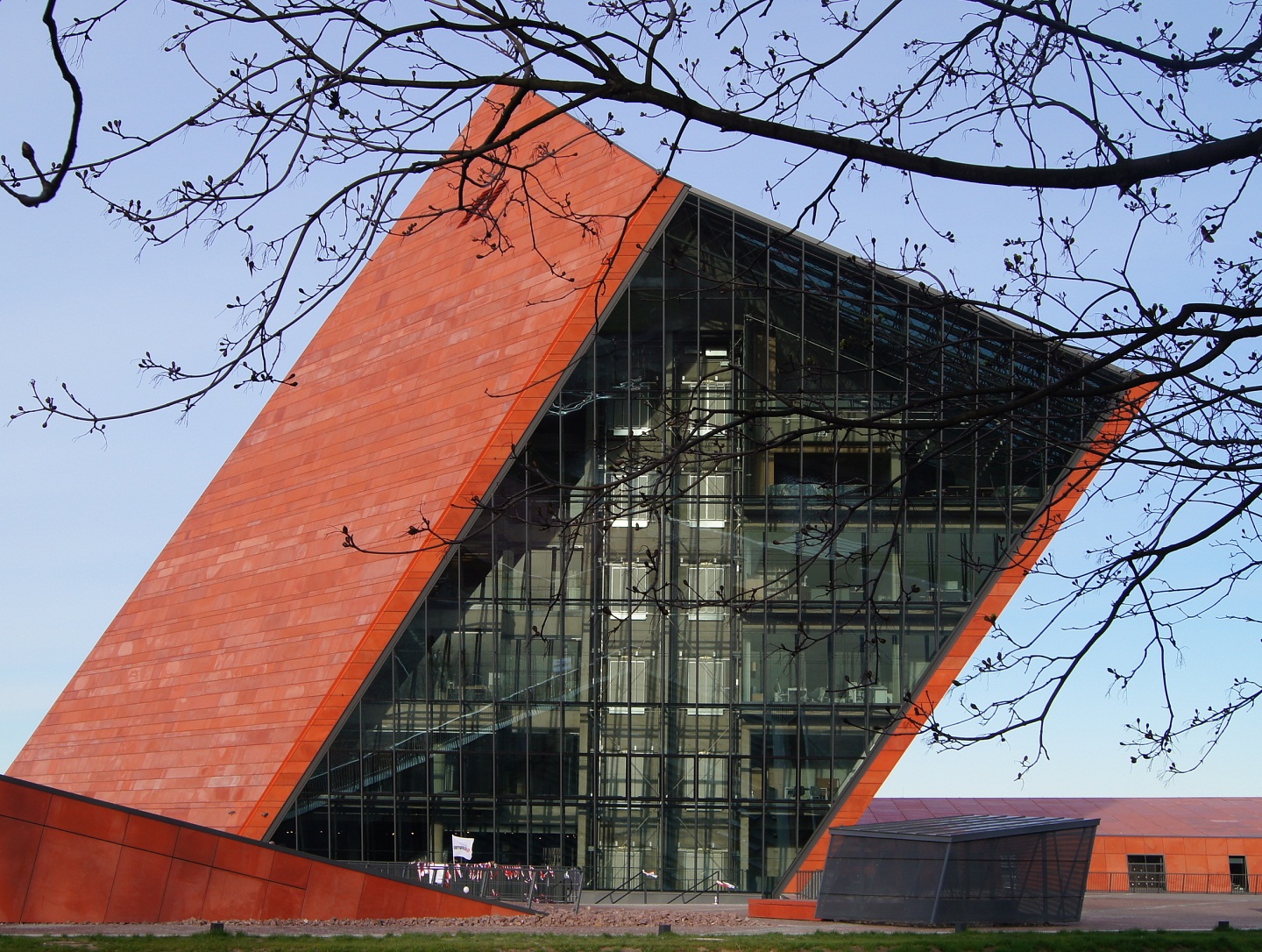The death of an exhibition
A Polish museum director paraded through his new workplace. He posed for pictures in front of a Russian tank with the Cyrillic inscription “For Stalin“, while people were placing candles at the building’s entrance in an act of mourning. This surreal scene took place at the Gdańsk Museum of the Second World War, the new battleground for Polish historical memory.
April 21, 2017 -
Mira Fricke
-
Articles and Commentary

The Museum of the Second World War was officially opened just several weeks ago on March 23rd. But for months before the opening, it was uncertain when and in what form the museum’s exhibition would be presented to the public. The main reason for the uncertainty was a row between the institution’s founding director and designer of the main exhibition Paweł Machcewicz and the Polish Ministry of Culture.

Not enough Polish heroism, fortitude and patriotism, too little about Polish military resistance – was the main argument of the ministry. Instead, the museum aimed to send a clear anti-war humanist message. A narrative a museum about the Second World War should arguably transmit. The terror and horror it brought to people on all sides. The creators of the exhibition certainly had this in mind, and sought to show the war from different angles and personal perspectives. Yet such a message was not patriotic enough for the ministry.
The museum is located in a newly built exhibition hall several metres underground. Cold, concrete walls dominate the space and remind the visitor of a bunker. Different themed rooms guide through nearly all stages and places of the Second World War – from Europe to the Far East. The exhibition includes little written text and instead presents multimedia stations and images and video clips of the war’s witnesses telling their stories. An audio guide supplements the strong visual impressions with background information.
The narration does not follow one national perspective, neither does it go into details about military strategies and equipment. Instead, it tries to give a wide overview keeping civilians, the main victims of the war, in focus regardless of their background. A large part of the 25,000 elements of the exhibit are private donations, like a handkerchief with a farewell letter on it. There is no glorification of war.
The decision to build the museum was made around eight years ago by the Civic Platform (PO) government with Donald Tusk as prime minister. The fact that Tusk – someone who according to the current authorities does not work in the national interest – is seen as the godfather of the museum is probably another reason why the new authorities have been against the museum. In December 2015, the Polish ministry of culture commissioned a new museum for Gdańsk – the Westerplatte museum.
Shortly afterwards the ministry announced that having two museums dealing with the topic of the Second World War would be redundant and inefficient from the state budget’s perspective (not to mention problems related to disseminating a coherent message on national history and traditions). Therefore, the ministry decided that both museums would be joined under a single director which would help rationalise costs. Several months later the museums’ merger was announced which has been widely criticised as an attempt to take over the Museum of the Second World War and influence its original storyline.
Last week Poland’s top administrative court overturned an earlier decision of a regional court which suspended the merger. On April 6th, a new director was put in place. Karol Nawrocki, a historian who is now in charge, said during his first press conference that he  does not intend to change the exhibition completely but sees the possibility for certain improvements. That those improvements will probably address the lack of Polish heroism the ministry missed in the current version of the exhibition and will therefore seek a more Polish centered narration is not hard to guess. Before taking the position as director, Nawrocki worked for the Institute of National Remembrance which was set up in the 1990s to investigate past crimes against the Polish nation and over the years has developed memory policy that has been in line with the politics of the current government.
does not intend to change the exhibition completely but sees the possibility for certain improvements. That those improvements will probably address the lack of Polish heroism the ministry missed in the current version of the exhibition and will therefore seek a more Polish centered narration is not hard to guess. Before taking the position as director, Nawrocki worked for the Institute of National Remembrance which was set up in the 1990s to investigate past crimes against the Polish nation and over the years has developed memory policy that has been in line with the politics of the current government.
Moreover, Nawrocki is the chairman of the Coalition for the Remembrance of the Cursed Soldiers (guerrilla groups fighting against Soviet rule in the first years following the Second World War) in Gdańsk – a topic that has been particularly important to the current government. On his first day on the job Nawrocki posed for pictures in front of a Russian tank in the exhibition, a gesture which may seem inappropriate to some. Visitors placed candles in front of the entrance on that day for a reason – they symbolically mourned the death of the museum in its current form.
Replacing Machcewicz shows the controversy of the current government’s culture of remembrance. One can only hope that Nawrocki has a chance to carefully listen to the museum’s audio guide which finishes with the sentence: “Have we learned nothing from that war?”
Mira Fricke is a Poznań-based German freelance journalist and master student of Science Studies, Humboldt-University Berlin. She holds a BA in Science Journalism.

































